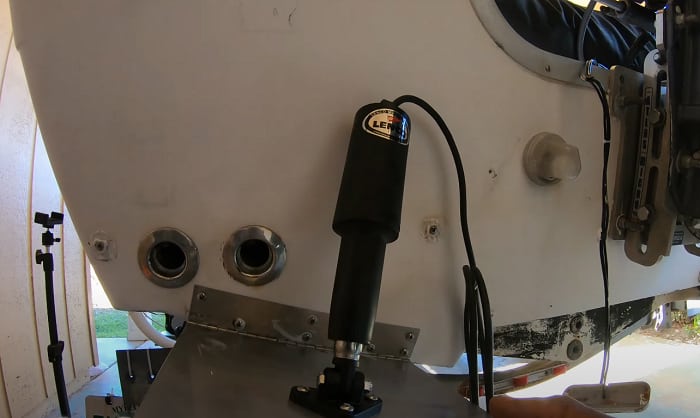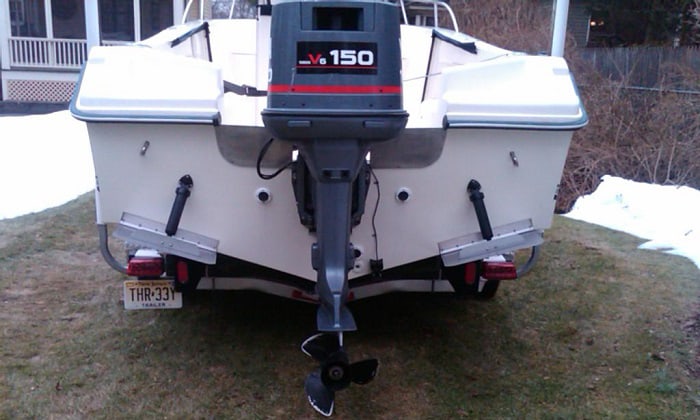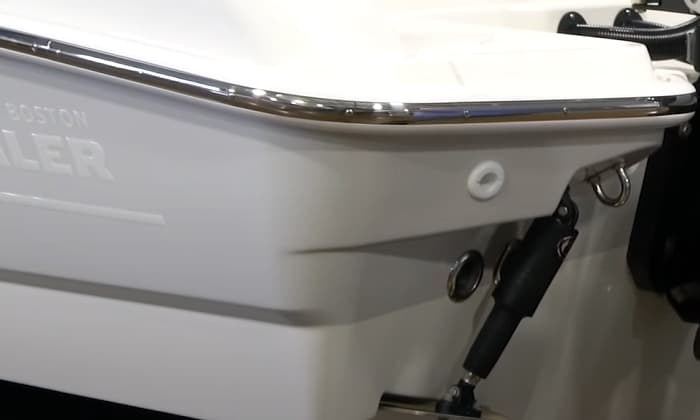What are trim tabs on a boat? Trim tabs ensure your boat will run level, regardless of marine and weather conditions. They also help vessels get up on a plane faster, address visibility issues, and boost the safety of the boating experience as a whole.
Boat trim tabs operate directly from the dashboard. Please continue reading on to learn how to use trim tabs, their advantages, and the boating issues they can address.
Table of Contents
How Trim Tabs Work
Attached to the stern of the boat, they can be adjusted to tilt it, either to port or starboard, with the help of hydraulic or mechanical actuators or ram cylinders. The position of the trim tabs, which is in the stern, is key to how they fulfill their purpose. They’re either mounted in pockets (assuming your boat has them) on the transom or flush-mounted on the same.
The two tabs are positioned on either side of the stern to easily correct listing or tilt. For example, with standard Lemco electric trim tabs, you’ll be given a controller for either tab on the dashboard with indicator lights for how far you’ve deployed each one.
“Deploying” in this case is simply lowering the trim tabs’ plate to the point that they’ll start deflecting the water, thereby, lifting the side of the stern that’s been listed to get the boat to level.
Here Are Sample Boating Scenarios That Highlight the Importance Of Tabs
- Let’s say you’re dealing with uneven loads or the vessel is listing into the port side due to stronger waves or wind. If that’s the case, you’ll only need to deploy the tab on the port side until your boat levels. Many boats actually suffer from this when they’re at idle speed, and trim tabs can almost always instantly correct it.
- Once you slow down from accelerating, your vessel’s bow will tend to rise, greatly affecting your visibility. If you have marine trim tabs, you only need to lower both of them to keep your boat on a plane even as it starts to cruise at slower speeds.
- Other elements cause the rising and falling of the bow, and this is called porpoising. You may also need to lower both tabs if this is the case but you may need to do so in quick bursts until it stops. This way, you won’t have to resort to slowing down just to make the proper adjustments.
Other Boating Situations When Trim Tabs Shine The Most
1. When you have too many passengers
I’ve met many boaters who take numerous people along with them during their boating holidays. Usually, this results in a very high bow rise that’s hard to correct unless you have trim tabs that will not only balance the boat but lift the stern as well so you can get in plain quicker.
This way, you don’t always have to ask people to move to the front or use the right prop for the usual number of passengers you take with you. Of course, there’s no reason for you to refrain from doing either of these two. The point is that trim tabs can fulfill both their purposes if used correctly.
2. When you have too much water spraying on either side of the boat
Almost any savvy seadog will say that you can’t have too much water spraying over your side of the boat, especially when navigating in choppier waters. Usually, these sprays happen on the side of the boat that’s elevated. With tabs, you can knock them out sooner by lowering that side.
Whether you decide to lower or raise should be dictated by your boat’s design. If it’s a soft chine boat, it may actually be better to elevate the side so that the sprays will only end up over you and a little further aft.
What’s great about most trim tabs setups is that you have plenty of freedom to experiment a bit and try what works best for your particular vessel. Even so, for all their perks, trim tabs for boats are actually optional.
That being said, sailors who cruise or fish regularly usually can’t do without these handy contraptions because of the way they can help overcome common hurdles like the ones we’ve mentioned here.
A Caveat When Using Trim Tabs On Your Boat
Suffice it to say, there are a lot of good things to say with regards to the question, what do trim tabs do on a boat? However, the phrase “too much of a good thing” may actually ring true in this case.
- Over-trimming at high speeds may cause boats to suddenly swerve in a different direction, raising the risk of accidents.
- Trim tabs aren’t immune to corrosion buildup. That may affect their performance, to the point that they may fail to work when you need to use them. For some excellent maintenance tips, please take the time to watch the following video:
On the whole, you have to be willing to proactively adjust the trim tabs based on the listing that’s happening. This is especially true if you’ve deployed one tab too much and the water and wind conditions have since changed.
FAQs
1. Do trim tabs slow down a boat?
Trim tabs cause a bit of drag when they’re deployed. However, they’re only ever really needed if the waves and wind are choppy. Most of the time, this is the case in oceans but not in rivers and lakes, so if you don’t want to deal with the speed reduction, then it’s best to stick to the latter.
2. Are trim tabs worth it?
If you find yourself facing the challenges we’ve mentioned here, then, yes, they’re well worth adding to your boat. To me, they’re a must-have for anyone who likes to sail, fish, or cruise regularly because they reduce motor load, thereby saving you more money in the long run.
Conclusion
We hope we’ve answered your question, “What are trim tabs on a boat?” with the inputs we’ve provided here. On the whole, leveling a boat becomes a piece of cake thanks to these gadgets. They’re just as helpful in a myriad of boating situations. Be sure you know the best situations to use them, realize when you’re using them wrongly, and maintain them when they’re already showing signs of wear and tear.

“My intention from the first day establishing Boating Basics Online is to provide as much help as possible for boaters who want to experience a first safe and convenient trip. So feel free to join us and share your beautiful journeys to the sea!”



